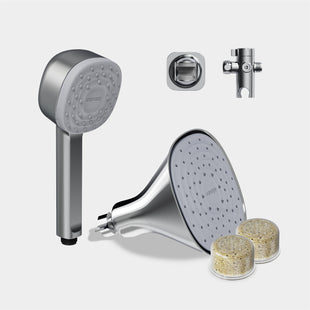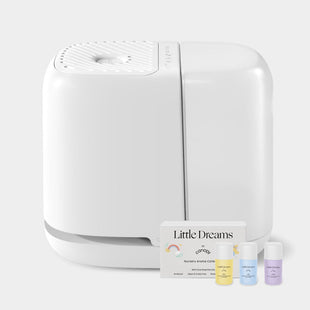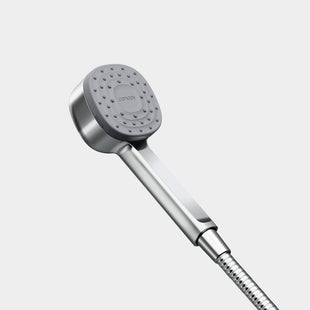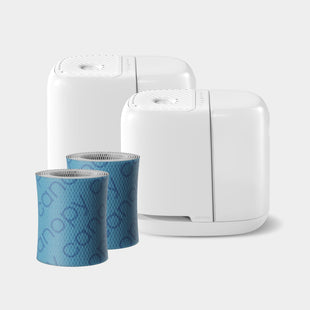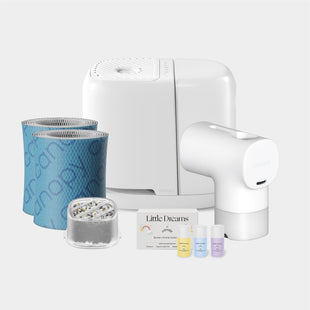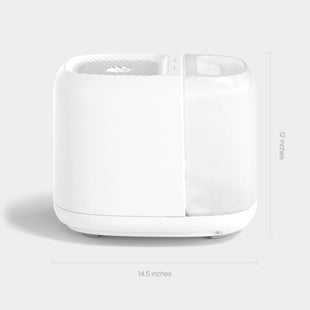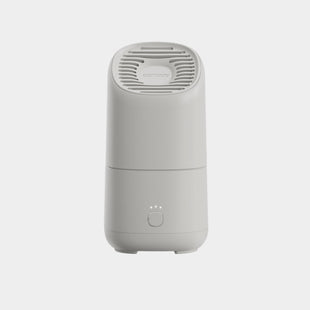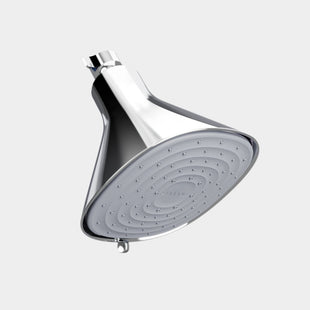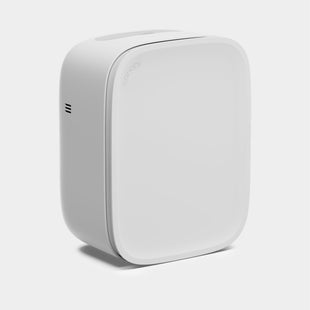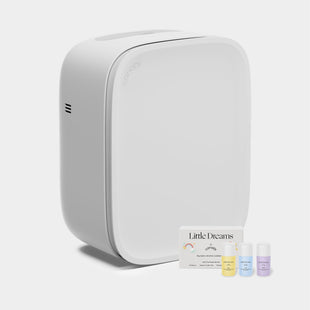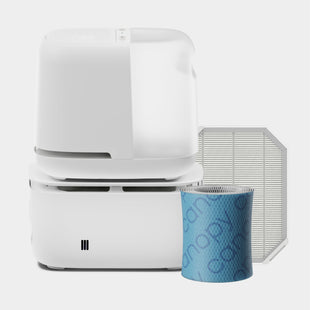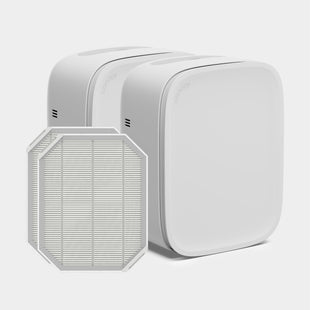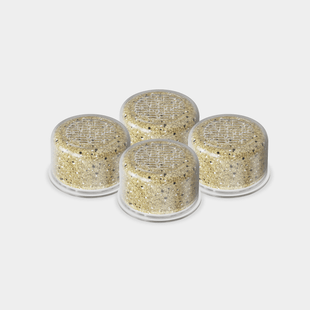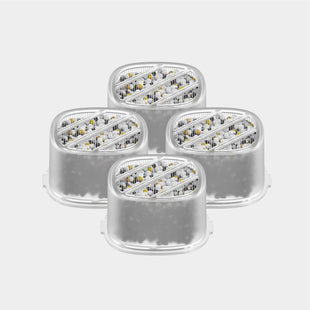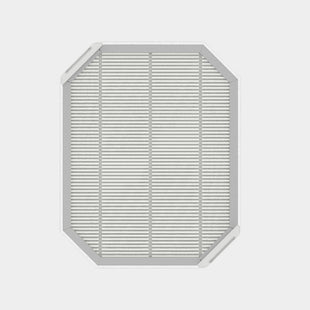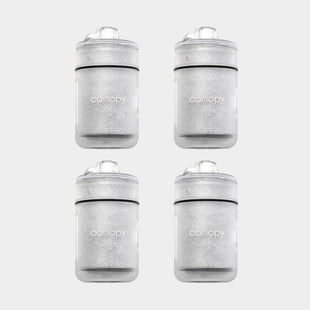Upon researching the myriad of air purifiers on the market, you may have encountered the term “True HEPA.” What is a True HEPA air purifier? Does the term HEPA have meaning? Should you look for a HEPA certificate or is there a universal standard to which HEPA filters adhere?
Whew! The acronym HEPA alone can induce overwhelm. In this post, we streamline the term “True HEPA” and provide you with a basic overview of HEPA filters including: what it means, what it is, and what it does.
What is a True HEPA Filter?
In order to delve into the term “True HEPA” filter, we need to take a few steps back. A HEPA filter is very simply a filter that adheres to HEPA standards outlined by the Department of Energy (DOE) in 1983, which includes the ability to remove 99.7% of airborne particles above 0.3 microns in diameter (the smallest particle size to enter your lungs). The acronym HEPA meaning is three-fold:
- High Efficiency Particulate Air
- High Efficiency Particulate Absorbing
- High Energy Particulate Arrestance

Filters with a HEPA certificate entered the commercial sector after World War II. During the war, scientists from the Manhattan Project developed these HEPA filters as a way to capture particulate matter released during the creation of the atomic bomb. The HEPA filtration tactic was so efficient, the HEPA filter became the gold standard of air filtration. In fact, you will find True HEPA filters in the following applications: air purifiers, air conditioners, laboratories, vacuum cleaners, airplane filtration, and more.
The HEPA filter is designed with tightly knit fiberglass fibers in a randomized pattern with microfine holes that allow for free flow of air while trapping both large and small particulate matter. The common household particulate matter trapped by the HEPA filter include: dust, mold, bacteria, pet dander, pollen, dust mites, smoke, and lead dust.
Over time, various companies developed competitive filters to the HEPA filter that have not received the DOE HEPA certificate and standard of approval. These filters are often referred to as “HEPA-Type,” “HEPA-Like,” “HEPA-Style,” or “99% HEPA,” which can be confusing to shoppers unfamiliar with the HEPA standard. As a result, a new keyword “True HEPA” entered the market, which simply refers to a filter with HEPA certification.
True HEPA Filter vs. HEPA-Type Filters
So, what is a True HEPA air purifier filter in comparison to a HEPA-Type air purifier filter?
True HEPA filters are independently tested and must receive a HEPA certificate of approval. HEPA-Type, HEPA-Like, HEPA-Style, and so on, are filters marketed with similar characteristics or qualities to the HEPA filter, though they have not received the formal, independent testing of a True HEPA filter.
True HEPA filters are the gold standard of air filtration for a reason: they are highly efficient at trapping unwanted particles from your home air. You can never go wrong with choosing a True HEPA filter for your home air filtration purposes. If you are working with a tighter budget, and your air contamination problems are mild, a HEPA-type filter may be sufficient for your home filtration needs.
How Does a True HEPA Filter Work?
Now that you are able to answer the question: “What is True HEPA air purifier?” you may be wondering: “what the heck does it do?”
A True HEPA Filter with a HEPA certificate of approval works similarly to a sieve but on a far smaller scale. The air current pushes its way through the interwoven fibers of the HEPA filter while particulate matter 0.3 microns and bigger are trapped in the fibers.
But, the True HEPA filter mechanics are hardly that simple. The HEPA filter has 4 primary mechanisms that allow this complex filtration system to produce such highly effective results. These mechanics include: interception, inertial impaction, diffusion, and electrostatic attraction.
Interception
A True HEPA filter is capable of filtering smaller particles through a mechanism called interception. Interception takes place when the air flow hits the HEPA filter and larger particles get trapped in the fiber weave of the filter. As more and more particles get “stuck” to the HEPA filter, the filter will become ineffective and will need to be replaced.
Inertial Impaction
Larger particles are trapped in the air gaps of the True HEPA filter through a process called inertial impaction, which is great for the air quality in your home but if the HEPA filter is not cleaned or replaced on a regular maintenance schedule, this could prevent proper air flow.
Diffusion
Diffusion refers to the process of trapping small particles by use of fibers and gas. Small particles start to veer and wander in a movement known as the Brownian Movement when their speed is reduced. The HEPA filter takes advantage of this movement by reducing air flow to maximize small particle entrapment.
Electrostatic Attraction
All particles have an electrostatic charge; the fiberglass fibers that compose the True HEPA filter also have an electrostatic charge. When particles with a positive or negative electrostatic charge come in contact with the fiberglass fibers, they bond through an electrostatic attraction and become trapped in the filter.
HEPA Terms and Definitions
As you research True HEPA filters, you will inevitably encounter a lot of fancy sounding jargon. There are a few recurring terms used to describe HEPA filters, which are helpful to know as you explore air filtration.
Clean Air Delivery Rate (CADR)
The Clean Air Delivery Rate, or most commonly referred to as the CADR, is an industrial standardized test conducted by the Association of Home Appliance Manufacturers (AHAM), which provides a cleaning efficiency rating based on a filters ability to effectively filter three primary air contaminants: smoke CADR, dust CADR, and pollen CADR.
Carbon or Activated Carbon Filters
A carbon filter is an effective alternative filtration option that uses activated carbon to purify the air. A carbon filter works by attracting particular matter, and trapping the contaminants on the carbon surface area.
Efficiency
Efficiency refers to the total number of particles trapped as air passes through a filter. As we mentioned, True HEPA filters must trap 99.7% of particles 0.3 microns and higher as they pass through the filter in order to receive a true HEPA certificate, which means that a True HEPA filter has a 99.7% efficiency. For every 10,000 particles, 3 particles would escape at a 99.7% efficiency.
Micron
A micron or a micrometer is a unit of measurement equating to one millionth of a meter (1/1,000,000). Microns are frequently used to measure microscopic particles. The human eye can see 10 microns or higher, which may help to put micrometers into perspective.

